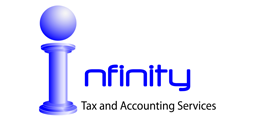- September 6, 2018
- Posted by: Hector Trevino
- Category: Finance & accounting

Avoid Penalty for Underpayment of Taxes; IRS says Check Withholding, Make Estimated Payments
IRS YouTube Videos:
Estimated Tax Payments – English | Spanish | ASL
WASHINGTON ― With nearly 10 million U.S. taxpayers facing a penalty for underpayment of estimated tax last year, the Internal Revenue Service urges taxpayers to plan ahead, understand their options and avoid the penalty when they file in early 2019.
To help taxpayers avoid this common situation, the IRS is focusing four neSet featured imagews releases this week on key areas to help taxpayers pay the right amount of tax and avoid an estimated tax penalty. The IRS is highlighting a variety of resources and tools – including the online Withholding Calculator – to help taxpayers determine if they need to make an additional tax payment to avoid an unwelcome surprise at tax time.
This is part of the wider Paycheck Checkup campaign to encourage people to check their tax situation, including withholding and estimated tax payments.
Those who are self-employed or have other income, such as interest, dividends, self-employment, capital gains, prizes and awards or have too little tax withheld from wages may need to make estimated or additional tax payments. Estimated tax is used to pay not only income tax, but other taxes such as self-employment tax and alternative minimum tax.
Pay as you go
The U.S. tax system is essentially “pay-as-you-go.” Taxes must be paid as income is earned or received during the year. For people who receive salaries, wages, pensions, unemployment compensation and the taxable part of Social Security benefits, tax can be withheld.
Taxpayers can adjust withholding on their paychecks or the amount of their estimated tax payments to help prevent penalties. This is especially important for people in the sharing economy, those with more than one job and those with major changes in their life, like a recent marriage, divorce or a new child.
Some income is not subject to withholding. This includes some income from the sharing economy and income from self-employment or rental activities. Individuals, including sole proprietors, partners and S corporation shareholders, may need to make estimated tax payments unless they owe less than $1,000 when they file their tax return or they had no tax liability in the prior year (subject to certain conditions).
Perform a ‘Paycheck Checkup’
The Tax Cuts and Jobs Act, enacted in December 2017, changed the way tax is calculated for most taxpayers, including those with substantial income not subject to withholding. Because of the far-reaching tax changes taking effect this year, the IRS urges all employees, including those with other sources of income, to perform a Paycheck Checkup now. Doing so now will help avoid an unexpected year-end tax bill and possibly a penalty. The easiest way to do this is to use the Withholding Calculator available on IRS.gov.
To use the Withholding Calculator most effectively, users should have a copy of last year’s tax return and recent paystubs. After filling out the Withholding Calculator, the tool will recommend the number of allowances the employee should claim on their Form W-4. Though primarily designed for employees who receive wages, the Withholding Calculator can also be helpful to some recipients of pension and annuity income. Recipients of pensions and annuities can make a change by filling out Form W-4P and giving it to their payer.
Form 1040-ES, Estimated Tax for Individuals, available on IRS.gov, is designed to help taxpayers figure these payments simply and accurately. The estimated tax package includes a quick rundown of key tax changes, income tax rate schedules for 2018 and a useful worksheet for figuring the right amount to pay. The IRS also mailed 1 million Form 1040-ES vouchers with instructions in late March to taxpayers who used this form last year.
Employees who expect to receive long-term capital gains or qualified dividends, or employees who owe self-employment tax, alternative minimum tax or tax on unearned income of minors should use the instructions in Publication 505 to check whether they should change their withholding or pay estimated tax.
When and how to pay estimated tax
Taxpayers normally make four estimated tax payments a year. Remaining payments for 2018 are due Sept. 17, 2018, and Jan. 15, 2019. Those who make estimated payments may be charged a penalty if those payments are late.
Taxpayers have a variety of ways to pay estimated tax: online, by phone or from their mobile device. Direct Pay is a secure online service to pay a tax bill or pay estimated tax directly from a checking or savings account at no cost. Visit IRS.gov/payments for easy and secure ways to pay taxes. If a taxpayer pays estimated tax by mail, they should use the payment vouchers that come with Form 1040-ES.
Publication 505, Tax Withholding and Estimated Tax, provides more information about these special estimated tax rules. Taxpayers in presidentially declared disaster areas may have more time to make these payments without penalty. Visit the Tax Relief in Disaster Situations page on IRS.gov for details.
For more information about estimated taxes, see these IRS resources:
- Estimated Tax – frequently asked Questions and Answers
- Form 1040-ES, Estimated Tax for Individuals
- Tax Topic 306 – Penalty for Underpayment of Estimated Tax
- FAQs Estimated Taxes for Individuals
Contact or Visit Us Today:
1700 Old Norcross Rd. Suite 2 Lawrenceville, GA 30046
770-277-3830
THE DESTINATION FOR ALL YOUR EXPERT FINANCIAL ADVICE AND SERVICES
